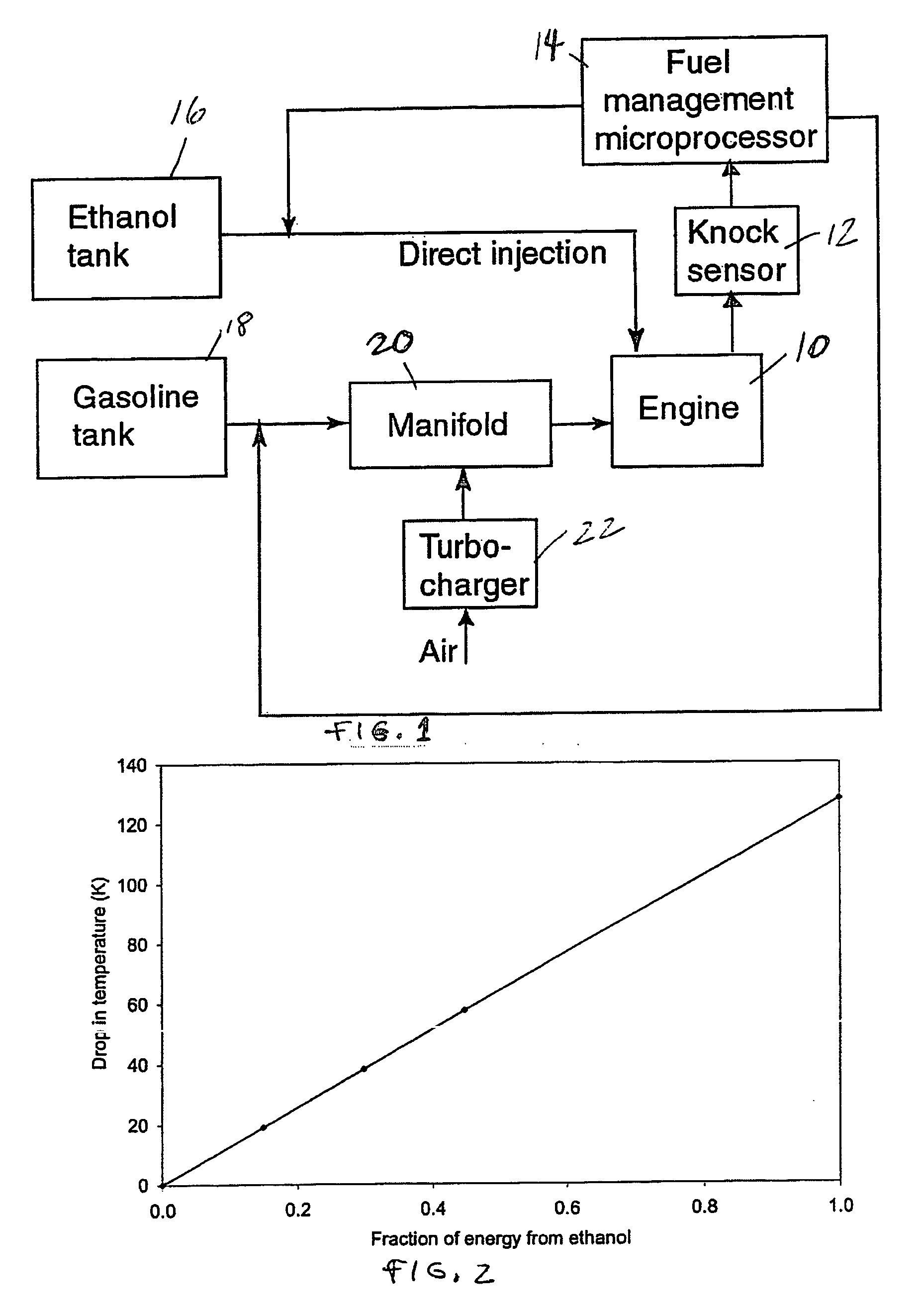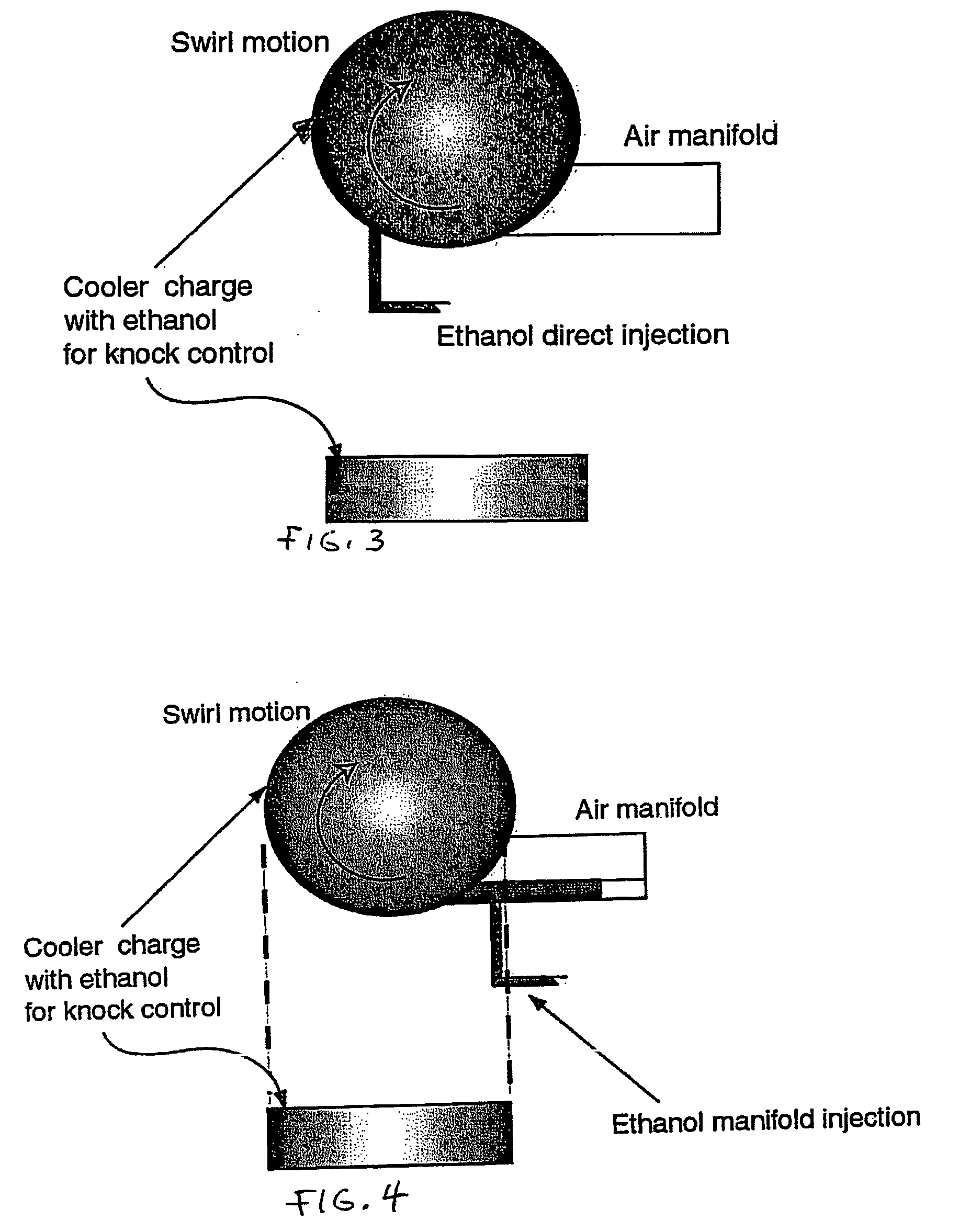Fuel management system for variable ethanol octane enhancehment of gasoline engines
a technology of ethanol octane and gasoline engine, which is applied in the direction of electric control, ignition automatic control, machines/engines, etc., can solve the problems of limited use of these techniques to increase engine efficiency, severely damage an engine, and modestly alleviate the tendency to knock, so as to reduce the octane requirement of the engine, improve knock resistance, and high heat of vaporization
- Summary
- Abstract
- Description
- Claims
- Application Information
AI Technical Summary
Benefits of technology
Problems solved by technology
Method used
Image
Examples
Embodiment Construction
[0015] With reference first to FIG. 1, a spark ignition gasoline engine 10 includes a knock sensor 12 and a fuel management microprocessor system 14. The fuel management microprocessor system 14 controls the direct injection of an antiknock agent such as ethanol from an ethanol tank 16. The fuel management microprocessor system 14 also controls the delivery of gasoline from a gasoline tank 18 into engine manifold 20. A turbocharger 22 is provided to improve the torque and power density of the engine 10. The amount of ethanol injection is dictated either by a predetermined correlation between octane number enhancement and fraction of fuel that is provided by ethanol in an open loop system or by a closed loop control system that uses a signal from the knock sensor 12 as an input to the fuel management microprocessor 14. In both situations, the fuel management processor 14 will minimize the amount of ethanol added to a cylinder while still preventing knock. It is also contemplated that...
PUM
 Login to View More
Login to View More Abstract
Description
Claims
Application Information
 Login to View More
Login to View More - R&D
- Intellectual Property
- Life Sciences
- Materials
- Tech Scout
- Unparalleled Data Quality
- Higher Quality Content
- 60% Fewer Hallucinations
Browse by: Latest US Patents, China's latest patents, Technical Efficacy Thesaurus, Application Domain, Technology Topic, Popular Technical Reports.
© 2025 PatSnap. All rights reserved.Legal|Privacy policy|Modern Slavery Act Transparency Statement|Sitemap|About US| Contact US: help@patsnap.com



